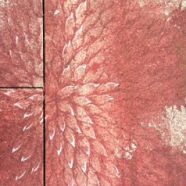The Lies We Live
Let
your feet find the path of broken shells,
bits of ivory, the fingerbones of Sioux children,
the broken skull of Osceola, stolen for a talisman,
teeth without their gold fillings, bits of skin . . .
Oh, sweet adventure with pirates and map, a trunk
so stuffed with gold it will blind the one
who cracks it open.
—Janet McAdams, “The Collectors”
My mother is a liar. In American Indian culture, she is simply a brilliant storyteller, the kind who spins visions from the ragged threads of reality. Her flight of fancy lit a burning path through my childhood, fevered it with promises of time travel and assurances of reincarnation. There was no separation between the world outside and the one we constructed within. It was our sweet adventure on the path of broken shells, the bits of ivory and gold we shored up against our ruins.
Some lies are like this. They protect us when the world seems otherwise poised to destroy, to scatter us, body and soul, to the four winds. When some go digging for their talisman, the bones of ancient, apocryphal Indian ancestors rise up, clinging to tomahawks and arrowheads to battle their way into the twenty-first century. My mother buried her weapons instead.
On Cape Cod, Massachusetts, to be Wampanoag Indian was to be perceived as black. For generations, members of the various tribal bands had married into local African American, Cape Verdean, and Portuguese populations, giving way to a brilliantly hybrid, contemporary community that remains staunchly, vibrantly indigenous; but its darker phenotype satisfies the American biracial psychosis better than its moccasined presumptions. For my mother and her peers—children of the sixties, witness to the Boston race riots of the seventies, and mop-carrying members of the working class—whiteness was the color of safety, of surrender. It was the fabric lofting the Kennedy sailboats across Hyannis Harbor, the gleaming porcelain of the summer houses my mother scrubbed for $10 an hour. When strangers admired her brilliant black hair, her light green eyes shocking against her summer-mahogany skin, she would lie. To the effervescent grocery store clerk who admired her “exotic” looks, asked where on Earth she came from, my mother snapped, “I’m from right here. I’m American.” I evaporated behind her, unsure of whether to be embarrassed or proud.
On one hand, she spoke a rare truth: we are from “right here,” and we’re “American” in all the complicated ways that Natives, first-generation immigrants, and fifth-generation Southerners alike share a patrimony. But what she really communicated was a delusion of purity, an invented pedigree of belonging, corroborated by the Whittimores and Pedersons who (probably) came over on the Mayflower, which was conveniently parked right down the street and might just as well have been our own family pleasure craft. A fabled matriarch in petticoats, sipping tea while storms and disease rocked that boat to its destiny, was far more fetching than the sooty Wampanoag girl who wasn’t even counted as such, because she was tending a white family far away from the tribe when the census takers rolled through town. Both are autochthonous, “first Americans” in the schizophrenic reckoning of historical memory. And we embellished and celebrated both equally, if separately, as sources of courage, of sacrifice, of strength; but only one was an antidote to the paltry contents of our shopping cart or my mother’s chipped fingernail polish as she scrupulously counted out the exact change she had precalculated in the aisles so as not to come up short at the register. When we celebrated “heritage” week in elementary school, my mother put away her shellfish pots and herbal home remedies, and instead exuberantly marshalled posterboard, sepia photographs, and library-verified recipes so that I could parade our Swedish lineage. It helped that I had inherited my Italian-English father’s fair, freckled face and auburn-flecked hair to sell the ruse; it was my cheekbones, as they say, that gave me away.
But not really. In my dreams, there are no shamanic grandparents beckoning to the tune of wind instruments and the call of the wild. Despite the luster of those legends, my own identity draws more from those rough-hewn fingernails than the Wedgwood china veneer or the irrepressible Indian princess of our collective American dreams. But ultimately, I am jerry-built of all three, and I recognize each shred as synthetic and authentic all at once. I realize this is why, as an academic, I work in both Native American and U.S. Southern studies, although I often feel like a tourist in both. I juxtapose American Indian and Southeastern cultures because, despite their elaborate costumes of distinctiveness, I can’t really see the difference between them. Both are communities born of private apocalypse, ravaged hopes, and overwhelming nostalgia. Both reconstruct palaces of plenty out of the wreckage of history. Both speak of lost causes, in various tongues that speak the same language after all. But both survive, too, in whatever retro-fitted, bedazzled uniforms of authenticity they can lay their hands on.
I recognize this dress-up chest, and the compulsion to kneel before it, from the basement of my mother’s house. Its contents are musty, dank, and dazzling; they wrap us in the worn blanket of belonging, one we might change to suit the climate, the audience, the hunger for acceptance. The world of the South, and of American Indians, and of the New England poor are parallel geographies after all; our lies can be disaster or deliverance, but in the end, they make us whole.







